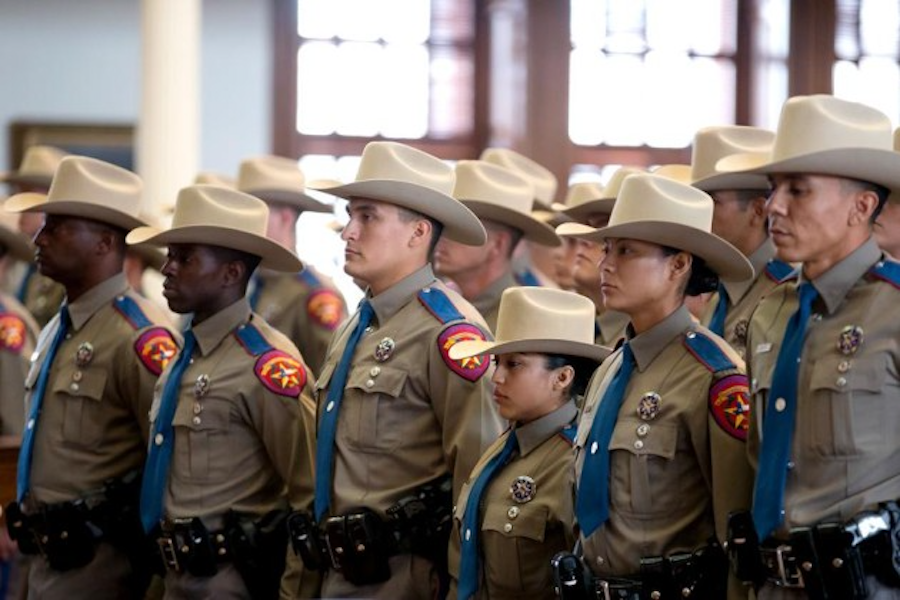Atwater v. Lago Vista, 532 U.S. 318 (2001)
CERTIORARI TO THE UNITED STATES COURT OF APPEALS FOR THE FIFTH CIRCUIT
No. 99-1408. Argued December 4, 2000-Decided April 24, 2001
Texas law makes it a misdemeanor, punishable only by a fine, either for a front-seat passenger in a car equipped with safety belts not to wear one or for the driver to fail to secure any small child riding in front. The warrantless arrest of anyone violating these provisions is expressly authorized by statute, but the police may issue citations in lieu of arrest. Petitioner Atwater drove her truck in Lago Vista, Texas, with her small children in the front seat. None of them was wearing a seatbelt. Respondent Turek, then a Lago Vista policeman, observed the seatbelt violations, pulled Atwater over, verbally berated her, handcuffed her, placed her in his squad car, and drove her to the local police station, where she was made to remove her shoes, jewelry, and eyeglasses, and empty her pockets. Officers took her “mug shot” and placed her, alone, in a jail cell for about an hour, after which she was taken before a magistrate and released on bond. She was charged with, among other things, violating the seatbelt law. She pleaded no contest to the seatbelt misdemeanors and paid a $50 fine. She and her husband (collectively Atwater) filed suit under 42 U. S. C. § 1983, alleging, inter alia, that the actions of respondents (collectively City) had violated her Fourth Amendment right to be free from unreasonable seizure. Given her admission that she had violated the law and the absence of any allegation that she was harmed or detained in any way inconsistent with the law, the District Court ruled the Fourth Amendment claim meritless and granted the City summary judgment. Sitting en banc, the Fifth Circuit affirmed. Relying on Whren v. United States, 517 U. S. 806, 817-818, the court observed that, although the Fourth Amendment generally requires a balancing of individual and governmental interests, the result is rarely in doubt where an arrest is based on probable cause. Because no one disputed that Turek had probable cause to arrest Atwater, and there was no evidence the arrest was conducted in an extraordinary manner, unusually harmful to Atwater’s privacy interests, the court held the arrest not unreasonable for Fourth Amendment purposes.
Held: The Fourth Amendment does not forbid a warrantless arrest for a minor criminal offense, such as a misdemeanor seatbelt violation punishable only by a fine. Pp. 326-355.
319
(a) In reading the Fourth Amendment, the Court is guided by the traditional protections against unreasonable searches and seizures afforded by the common law at the time of the framing. E. g., Wilson v. Arkansas, 514 U. S. 927, 931. Atwater contends that founding-era common-law rules forbade officers to make warrantless misdemeanor arrests except in cases of “breach of the peace,” a category she claims was then understood narrowly as covering only those nonfelony offenses involving or tending toward violence. Although this argument is not insubstantial, it ultimately fails. Pp. 326-345.
(1) Even after making some allowance for variations in the prefounding English common-law usage of “breach of the peace,” the founding-era common-law rules were not nearly as clear as Atwater claims. Pp. 327-335.
(i) A review of the relevant English decisions, as well as English and colonial American legal treatises, legal dictionaries, and procedure manuals, demonstrates disagreement, not unanimity, with respect to officers’ warrantless misdemeanor arrest power. On one side, eminent authorities support Atwater’s position that the common law confined warrantless misdemeanor arrests to actual breaches of the peace. See, e. g., Queen v. Tooley, 2 Ld. Raym. 1296, 1301, 92 Eng. Rep. 349, 352. However, there is also considerable evidence of a broader conception of common-law misdemeanor arrest authority unlimited by any breach-of-the-peace condition. See, e. g., Holyday v. Oxenbridge, Cro. Car. 234, 79 Eng. Rep. 805, 805-806; 2 M. Hale, Pleas of the Crown 88. Thus, the Court is not convinced that Atwater’s is the correct, or even necessarily the better, reading of the common-law history. Pp. 328-332.
(ii) A second, and equally serious, problem for Atwater’s historical argument is posed by various statutes enacted by Parliament well before this Republic’s founding that authorized peace officers (and even private persons) to make warrantless arrests for all sorts of relatively minor offenses unaccompanied by violence, including, among others, nightwalking, unlawful game playing, profane cursing, and negligent carriage driving. Pp. 333-335.
(2) An examination of specifically American evidence is to the same effect. Neither the history of the framing era nor subsequent legal development indicates that the Fourth Amendment was originally understood, or has traditionally been read, to embrace Atwater’s position. Pp. 336-345.
(i) Atwater has cited no particular evidence that those who framed and ratified the Fourth Amendment sought to limit peace officers’ warrantless misdemeanor arrest authority to instances of actual breach of the peace, and the Court’s review of framing-era documentary
